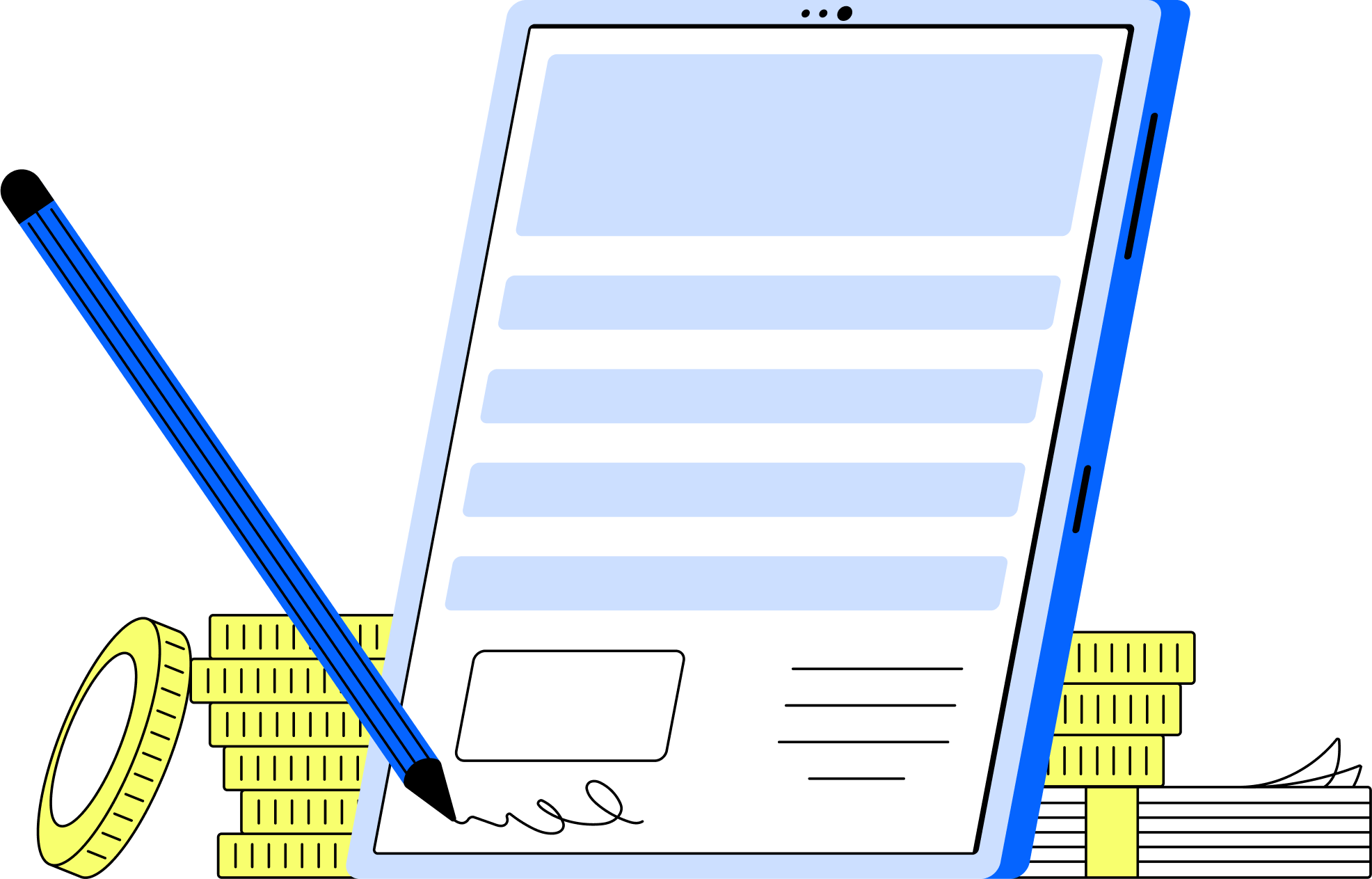
Remote & Async Work — 6 min

As a freelancer, you have the freedom to set your hours, and rates, and work from nearly anywhere. However, being your own boss also means that you don’t receive regular paychecks or payments from your employer every month.
It’s up to you to make sure you receive timely and accurate payments from your clients for the work you do for them.
In this article, we’ll take a look at some of the best ways to get paid as a freelancer. Then, we’ll discuss how to choose a payment method that works for you and share a few tips to help you collect your payments faster.
Let’s look at some of the best methods to collect payments from clients for freelance work.
There are several free and paid online payment platforms you could use to get paid by clients. Some providers don’t charge a monthly fee but instead charge per transaction, such as generating an invoice. Others may charge currency conversion fees for international transactions. Or some software might charge for both.
For example:
PayPal: supports international payments but charges currency conversion fees
Stripe: supports international payments but charges currency conversion fees
Melio: supports international payments, but charges a flat $20 fee that covers the payment and currency conversion.
Online payment software works well for freelancers who are looking for a straightforward way to get paid. They typically have a low number of monthly transactions and don’t have to deal with multiple clients at a time.
While online payment solutions are easy to use and get the job done, they tend to lack the features that full-blown accounting platforms provide, such as payment reminders or automated payments.
Several accounting and bookkeeping solutions come with invoicing features. The invoice and payment data flows right to your books, making bookkeeping easier.
These solutions tend to have monthly fees but cover areas beyond invoicing and offer additional features compared to online payment solutions. They may also charge processing fees for credit card payments.
Examples of accounting and invoicing software include the following:
Quickbooks
FreshBooks
Wave
Bonsai
Freelance platforms help connect clients and freelancers. Clients can post jobs for freelancers, and freelancers can build their profiles and send proposals. This functionality makes these platforms excellent starting points if you’re new to freelancing and seeking employment.
Freelance platforms are also a practical option if you’re a contractor working abroad. Because you can take on work and get paid from anywhere, you can travel or even move to another country without impacting your freelance income.
Freelance platforms protect you by requiring the client to put money into a neutral escrow account for a project while you complete the work. Once your client approves the work, the platform releases the money to you. Most platforms have an arbitration process clients and freelancers can work through in case any issues arise.
Some of the most well-known freelancer platforms include the following:
Upwork
Freelancer
Toptal
SolidGigs
Many of these platforms are either free or offer freemium and paid plans. They tend to take a percentage of your earnings as part of their business model. Some job boards only offer paid subscriptions. In exchange, they have lower or no transaction fees.
Using Remote's freelancer platform to work with clients means you won’t have to worry about high fees or navigating a complex platform. Remote is simple, easy to use, and is the most cost-effective option for your freelancer business. It also comes with purpose-built features that enable you to take on international clients so that you can get paid by clients located almost anywhere in the world in any currency.
Bank automated clearing house (ACH) transfers money from your client’s bank account to yours. These minimize transaction fees with domestic clients since banks don’t make money through regular bank transfers. As a result, ACH could be a good option for retainers.
There are downsides, though. For one, international ACH transfers can cost a lot.
Furthermore, you have to give your clients your banking information. This means you have to vet each client carefully. If you aren’t comfortable doing this, using ACH is out of the question.
Unless the client uses Remote.
Remote’s top-notch General Data Protection Regulation and SOC 2 security processes guard your sensitive data while letting you enjoy the speed and convenience of ACH transfers.
It’s cheaper to collect payments from international clients through Remote, too. Your client can set up automatic payments so that neither of you has to consider your monthly retainer fee.
Receiving payments via check can help you avoid potential issues that can impact technological transactions, such as:
Payment method glitches
Inability to access your computer or laptop
Website downtime
Account cancelation or removal (such as for violating the payment method or platform’s terms)
However, physical checks are the least convenient option since you have to wait for them to arrive in the mail, and then physically take them to the bank and deposit them in person. Plus, there’s always a risk that they get lost or stolen in the process.

We’ve laid out the most popular payment methods and discussed their pros and cons. Ultimately, you’ll have to do some research to pick the best one for you.
Let’s consider some factors when choosing a payment method.
Payment method fees can eat into your earnings if you aren’t careful. Make sure that the software you’re using has the right features and capabilities for your needs that make the fees worth it.
For instance, if you have clients in multiple countries, check if the provider offers reasonable currency exchange fees. Compare the transaction and processing fees against the features offered by each provider and choose the best option for you.
As you grow, you might want to upgrade to accounting software which charges a monthly subscription for other features, such as bookkeeping and financial reporting.
The more payment methods you accept, the more clients you can take on. Plus, those clients will have an easier time paying you, strengthening your relationship with them since they can switch payment methods if necessary.
For instance, in 2019, over half of small businesses had a business credit card for external spending. It’s reasonable to assume that number has only grown alongside developments in remote work tech and trends.
You’ll need to find clients who can pay internationally and in your currency to expand your business across borders.
Bring freelancer payments under control with Remote. Our platform allows clients to make payments in 100+ currencies in 200+ countries. This means you can receive guaranteed payouts in your chosen currency in minutes.
Payment fraud and similar cyber threats are on the rise. Payment processing technology that lacks proper security creates avenues for cybercriminals to launch cyberattacks or get a hold of your or your client’s financial information.
Using a payment method with top-notch security adds to your credibility and professionalism and keeps your and your clients’ data safe. Clients will feel more reassured if you use reputable methods that employ the latest and most robust security protocols.
Recommending that your clients use a reliable contractor management platform like Remote will ensure that they can pay you and any other independent contractors who work for them in the most secure way possible.
Cash flow is king. The faster you get paid, the quicker you can pay your bills and reinvest in your freelance business. With that in mind, here are some ways to get paid faster:
In addition to giving you legal protection, contracts make you appear more professional. The client will also feel they’re making a substantial commitment to you. With a formal agreement in place, both parties are clear on their respective responsibilities and obligations.
The contract itself should specify the payment method, terms, and frequency so that both parties are clear on invoicing and payments. Either party can always refer to the contract, in case issues arise. Read our helpful article on what to include in a contractor agreement.
Since a contract is a legal document, it can be tricky to create one because it needs to be robust, clear, and compliant with local laws. Remote can get up and running quickly by helping you create your own contract using one of our contract templates.
It can be a risky move to accept payment only after you deliver work to the client. You may end up having to chase clients for payment. Plus, your cash flow can suffer, which can impact your living and business expenses, and cause you considerable stress and hassle.
As you gain experience and confidence, you could begin demanding upfront payment. A good way to transition to this arrangement is to require a nonrefundable deposit upfront that covers a portion of the fee, from 25 to 50%, for instance.
Some accounting and invoicing platforms let you automate several aspects of invoicing. For example, you can set up recurring invoices for retainer clients or duplicate old invoices for similar one-off projects to save time.
Furthermore, you can schedule automated reminders if the client doesn’t pay within a certain timeframe. This can save you time and reduce the likelihood of late payments. It can also help you avoid forgetting to collect on an invoice.
As your freelancing career progresses, you could offer early payment discounts to incentivize faster payment.
Early payment discounts let you trade some revenue for cash flow if your client pays within a set number of business days. As a result, you can reinvest in your business quickly, potentially offsetting any revenue dips that early payment discounts might cause.
A freelance role may give you the much-needed freedom and independence to drive your career. But you’ll also have to deal with the headache of managing multiple clients, keeping track of your workload, and getting paid on time.
If you’re struggling to get paid as a freelancer or looking for a reliable method to get quick and regular payments, check out Remote’s Freelancer Hub. Our simple, intuitive platform for freelancers and contractors helps you:
Manage clients on a single platform
Create customized local contracts or upload your own
Track the status of your invoice in our dashboard
Receive lightning-fast payments in your local currency.
Learn more about how Remote’s Freelancer Hub can help your clients pay you faster and more easily today! You can also contact our friendly team to learn more about how our platform can help you manage your freelance business.

Sign up with Remote for locally compliant contract templates and simple payments at just $29 per month, with no hidden fees.

Explore freelance work trends in 2025—where companies hire, the skills they need, and the challenges ahead. Get insights from businesses and contractors inside.

Subscribe to receive the latest
Remote blog posts and updates in your inbox.

Remote & Async Work — 6 min

Newsroom — 3 min

Product Updates — 6 min

Employer of Record & PEO — 3 min